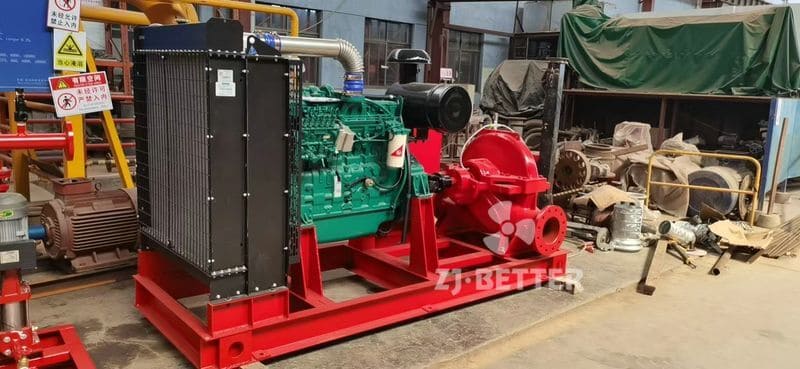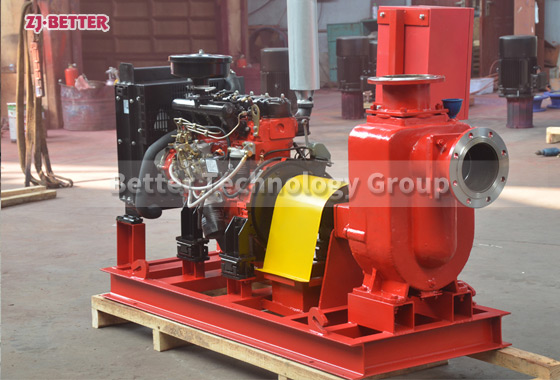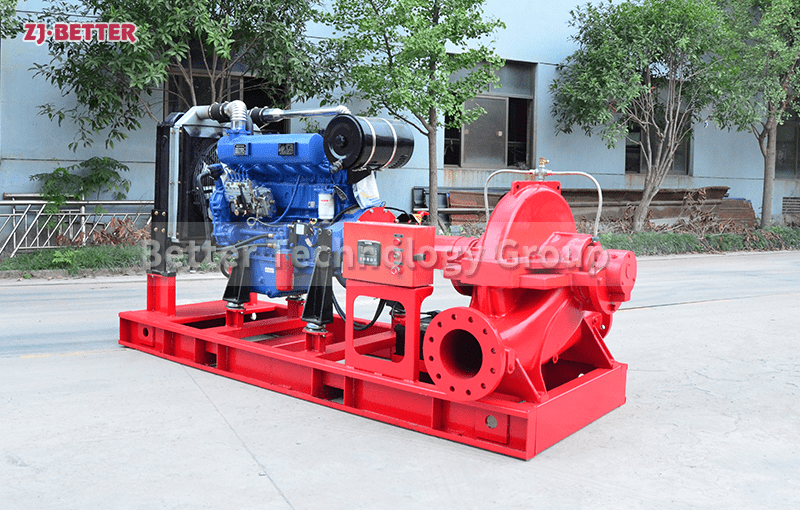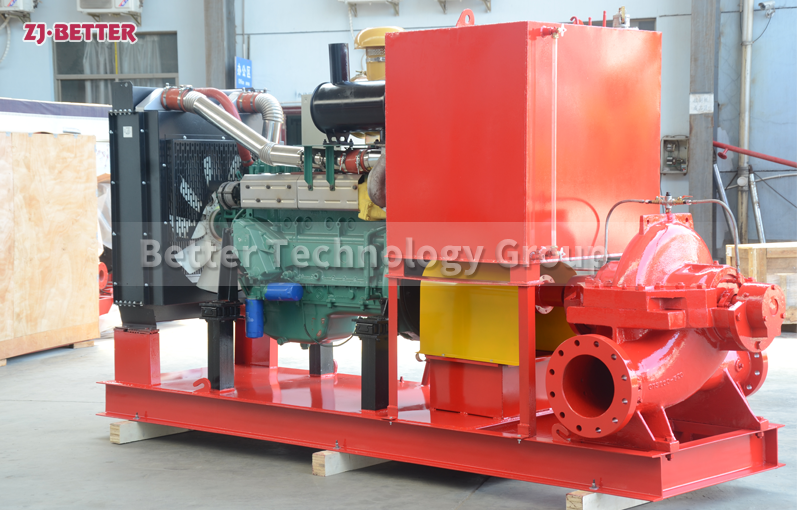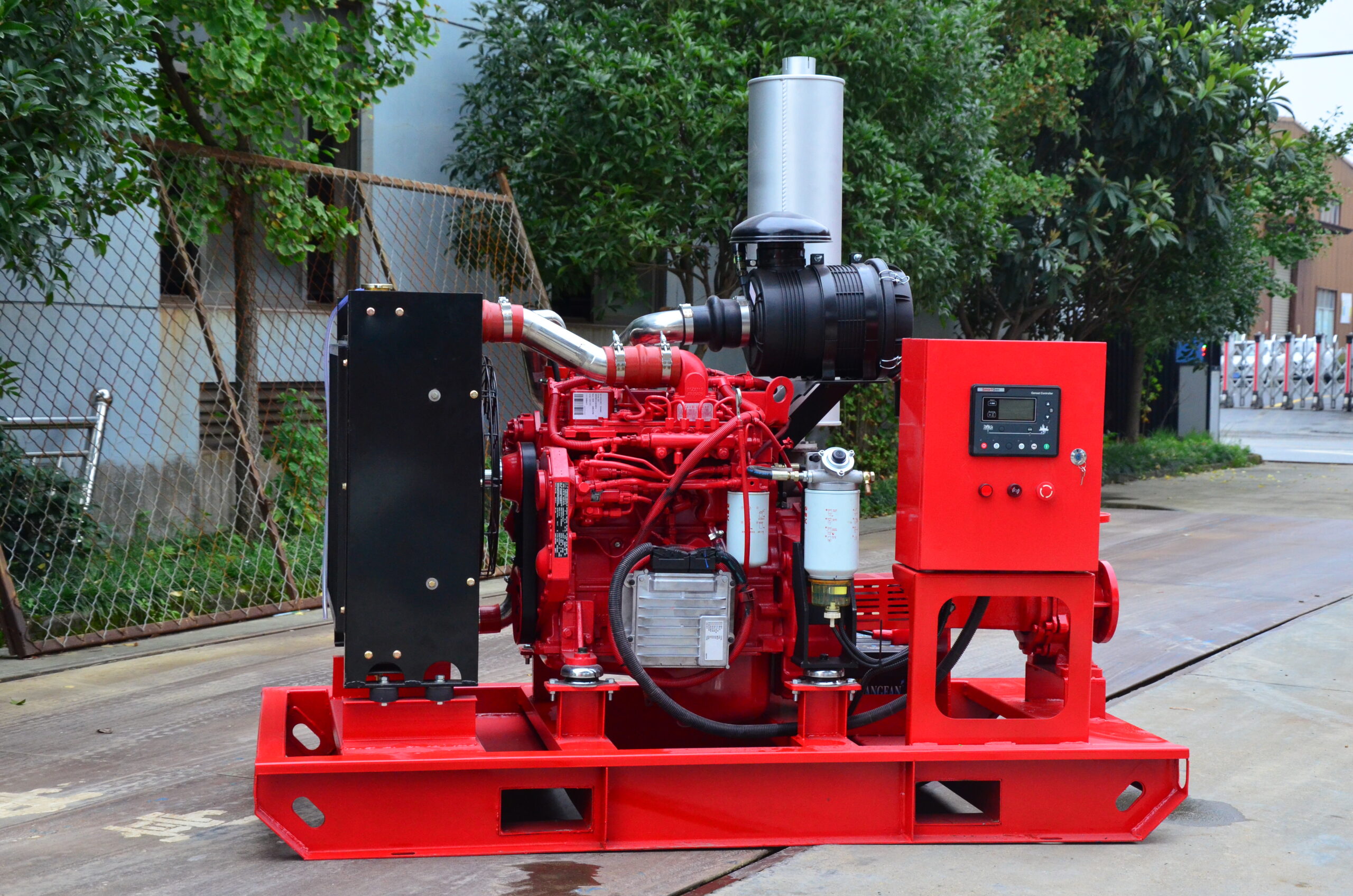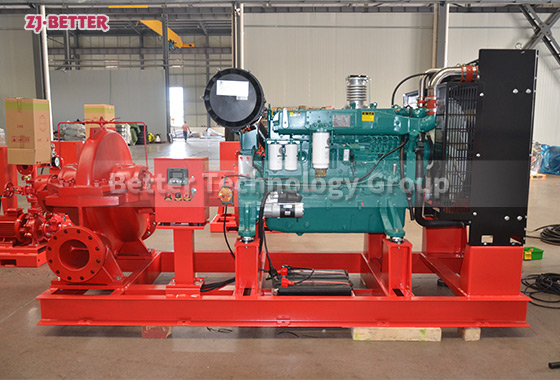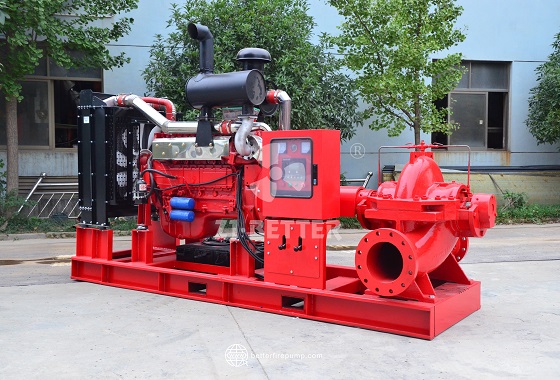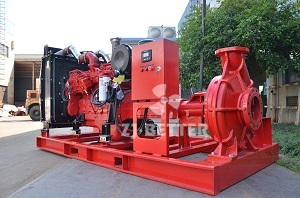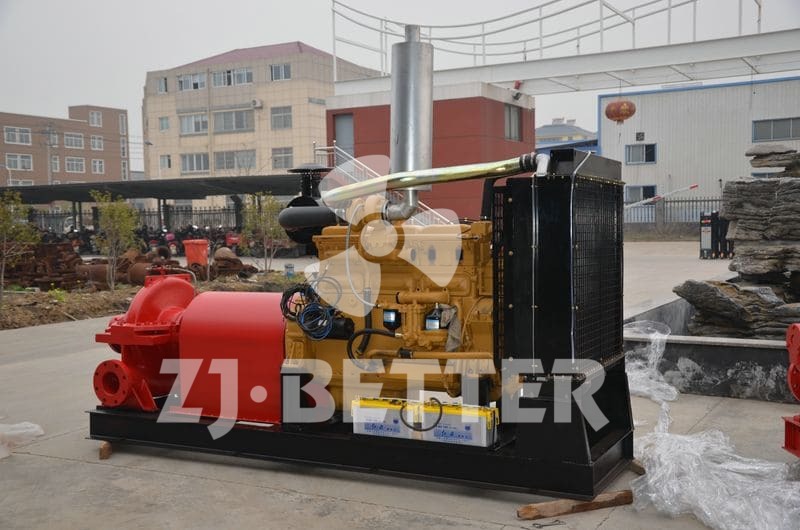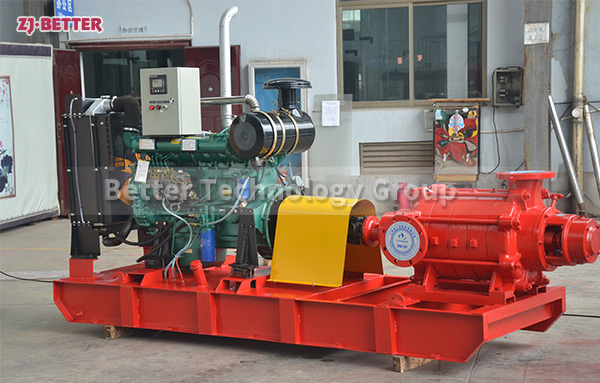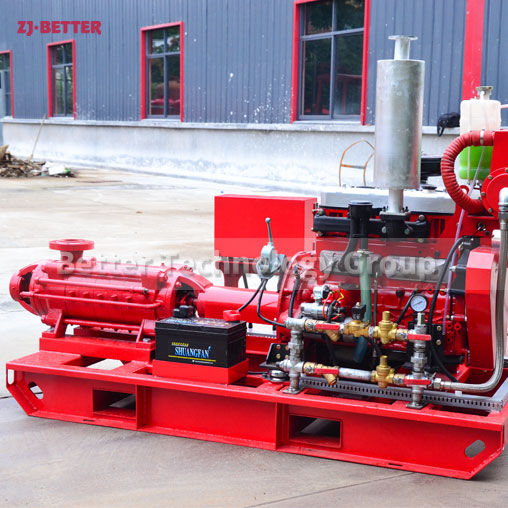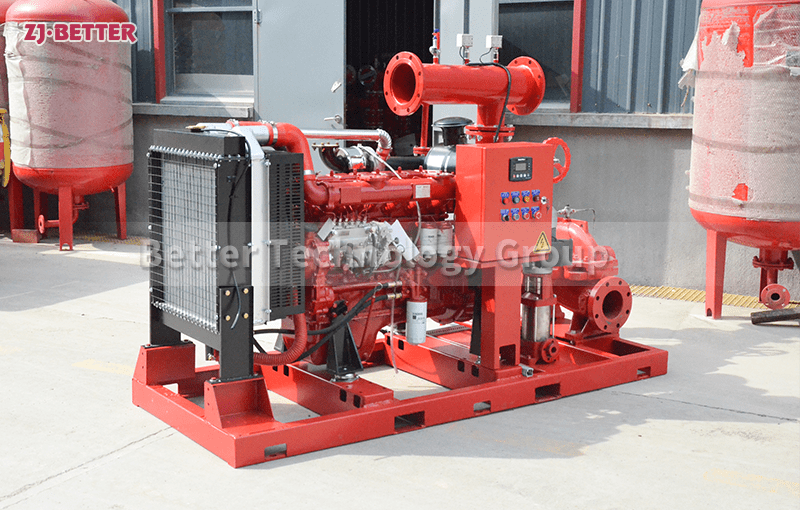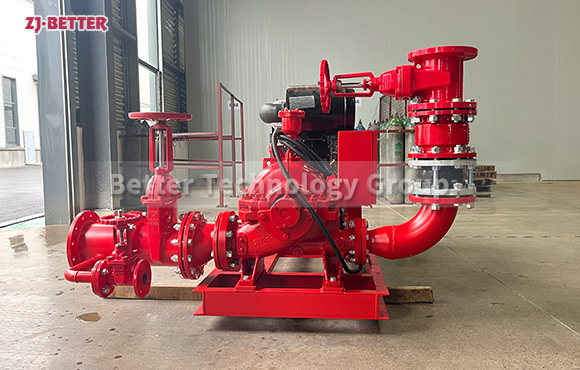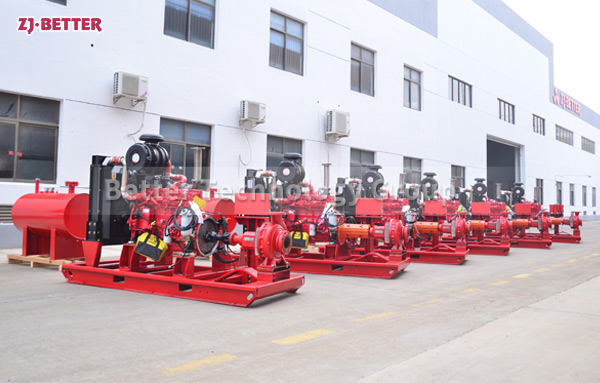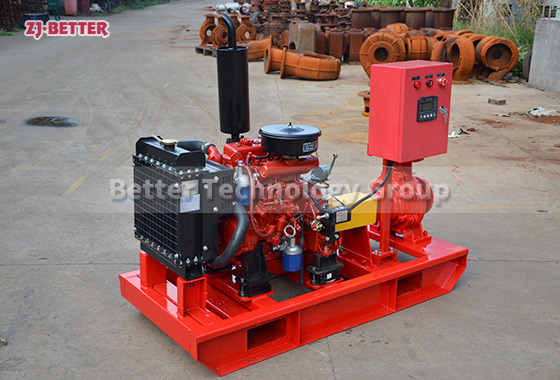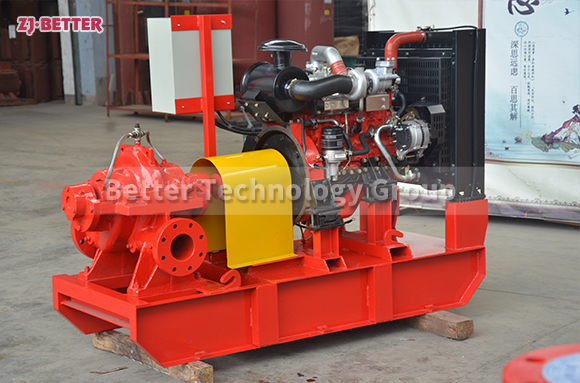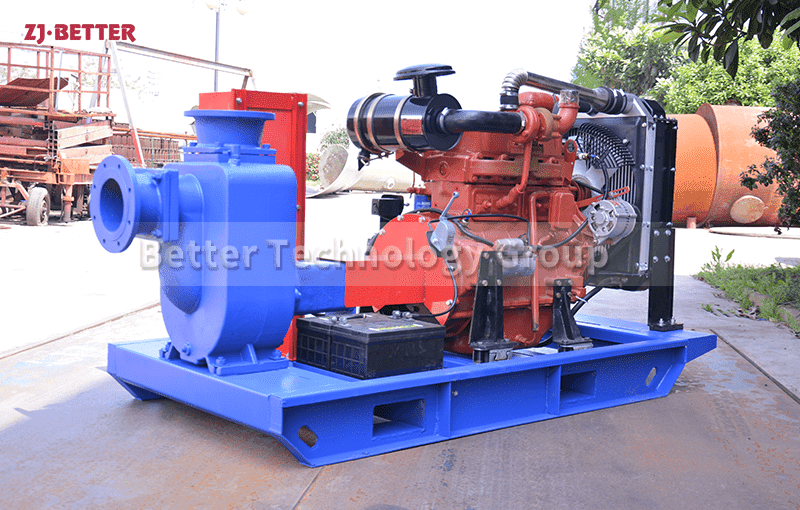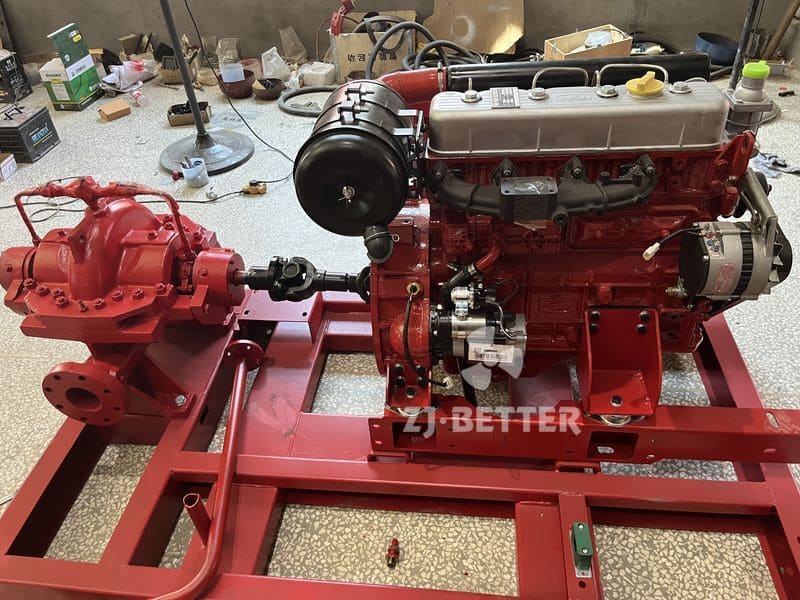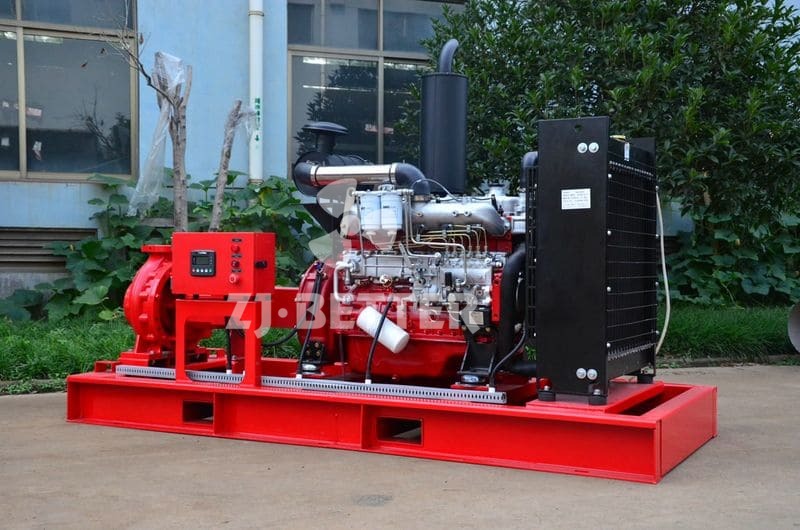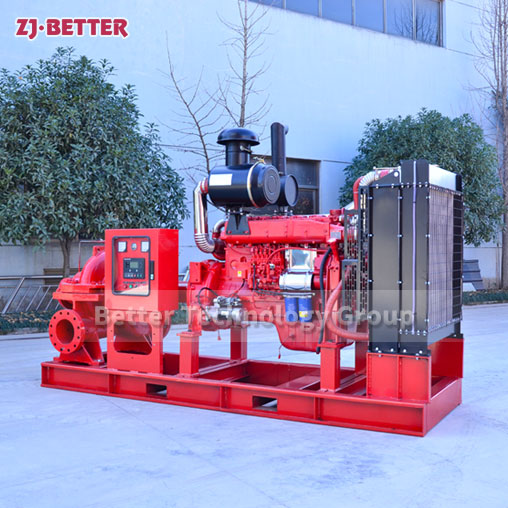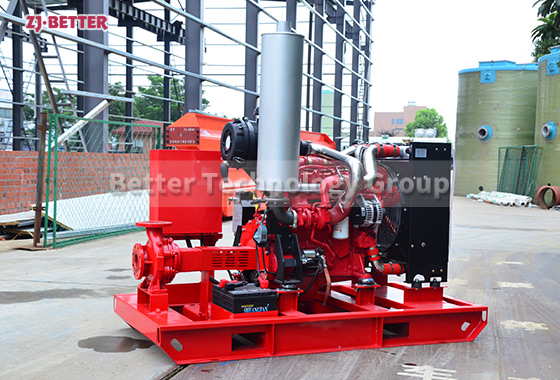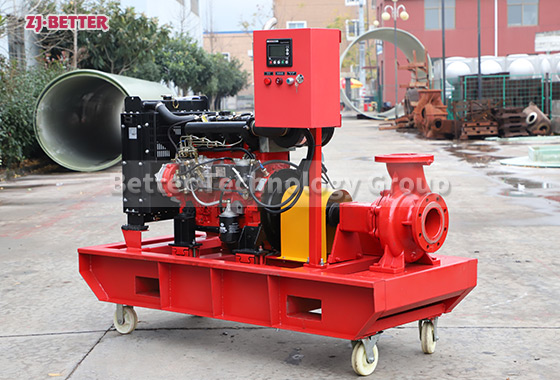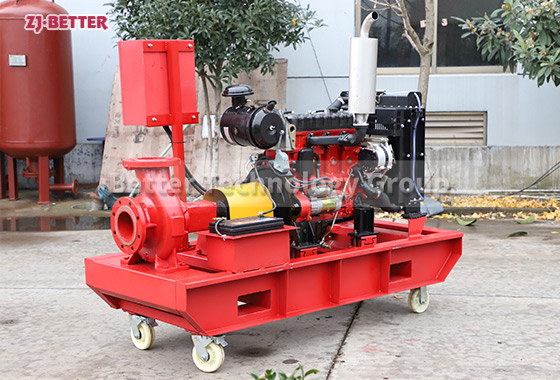Large Flow Diesel Fire Pump
Diesel engine fire pump set adopts OTS fire pump. It has the characteristics of high efficiency, wide performance range, safe and stable operation, low noise, long life, convenient installation and maintenance, etc. For conveying clean water or other liquids with physical and chemical properties similar to water. It can also be used to transport hot water, oil, corrosive or abrasive media by changing the material of the pump flow parts, the sealing form and increasing the cooling system.
Diesel engine fire pumps have been widely used in fire diversion as fixed fire extinguishing equipment, especially in the case of sudden fire water supply such as lack of power supply or abnormal power supply. , fire pump, connecting device, fuel tank, radiator, battery pack, intelligent automatic control screen, etc. Diesel engine fire pump products have the characteristics of leading technology, high degree of automation, excellent performance protection function, reasonable structure, simple installation and high cost performance. At the same time, in order to meet the different needs of users and reasonable investment, the products are divided into fire pumps, industrial emergency pumps, agricultural pumps, marine pumps, trailer-type mobile water pump stations and other application series, which can be used together with electric fire pumps.

